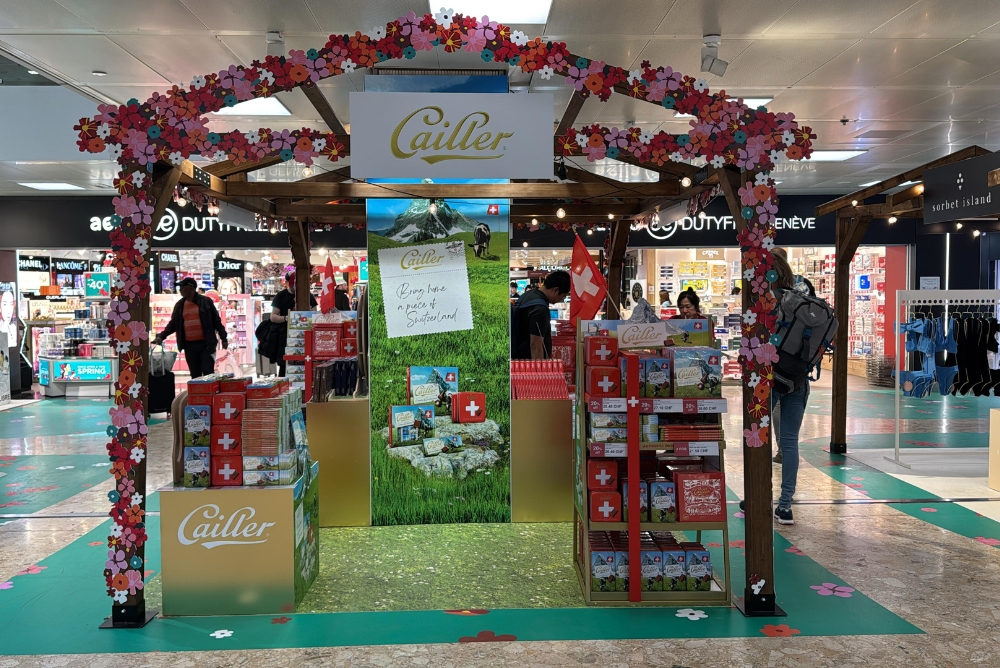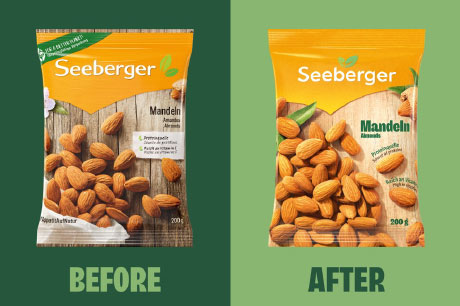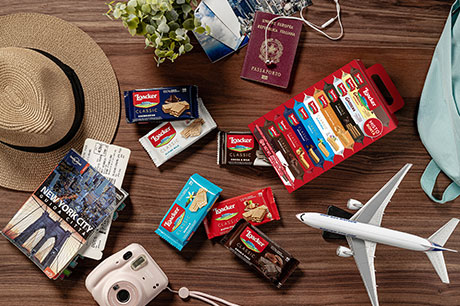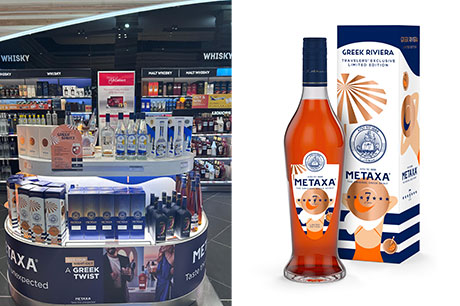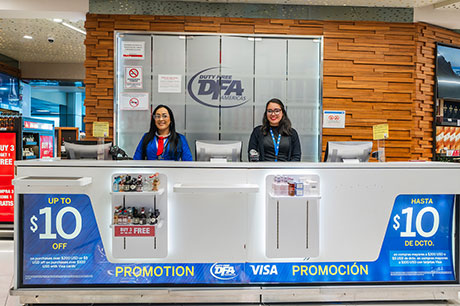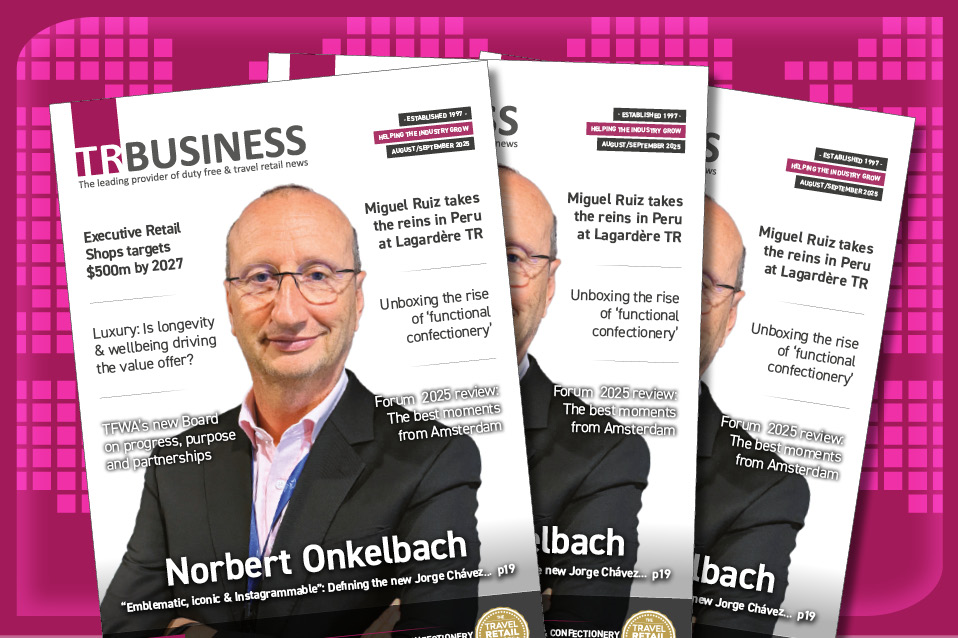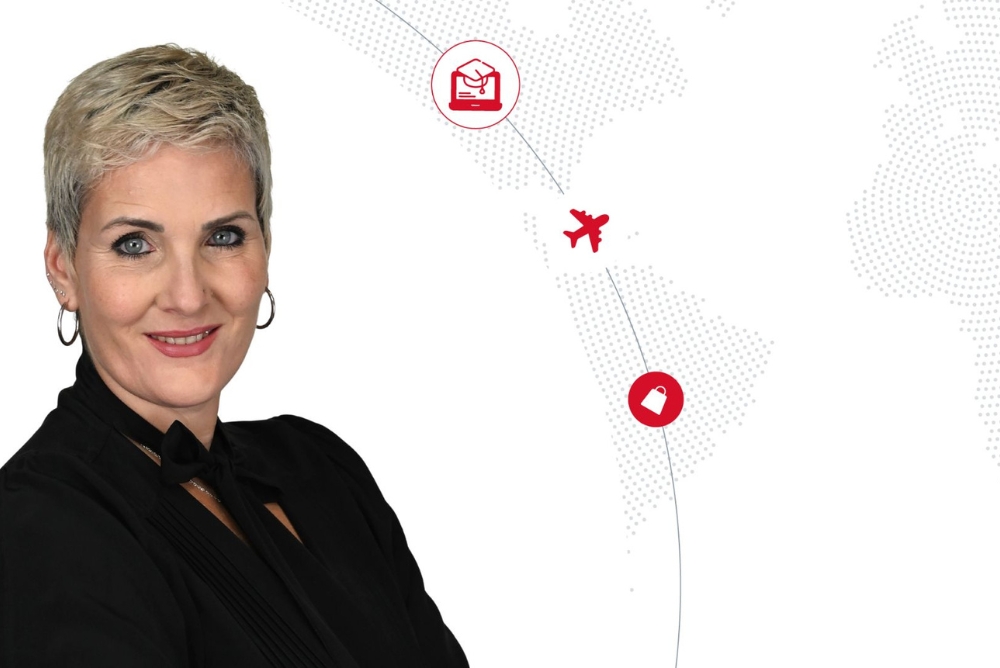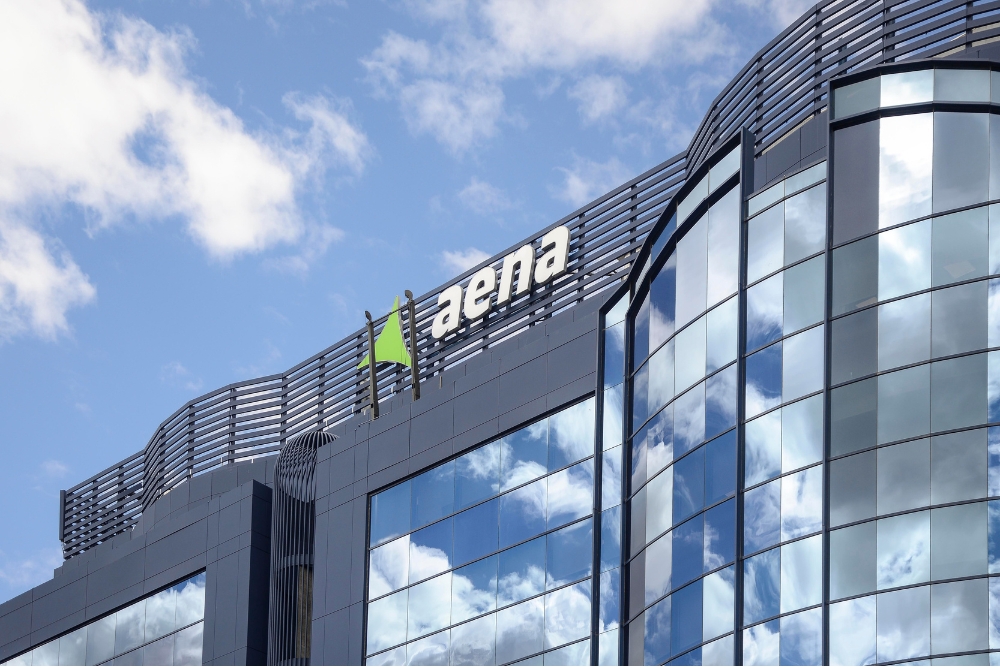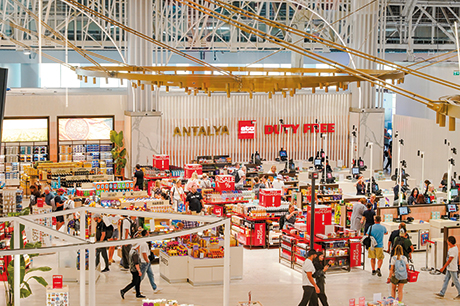Exclusive interview with IAADFS Executive Director Michael Payne
By Doug Newhouse |
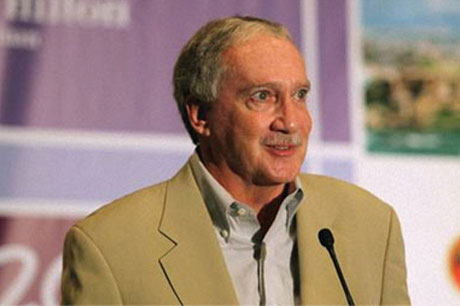
Pre-registration for this month’s sold out IAADFS Duty Free Show of the Americas has been running 7% to 8% ahead and Executive Director Michael Payne told Doug Newhouse that he is expecting numbers slightly up on last year’s plus-2,700 delegates at the Marriott Orlando where IAADFS has also secured a number of improvements.
With around 450 company members, the International Association of Airport Duty Free Stores (IAADFS) has long been a model for all other regional duty free and travel retail trade associations around the world, since it was founded in 1966.
Besides generating income from its membership fees, IAADFS’ revenues from its annual Duty Free Show of the Americas (at the Orlando World Center Marriott – pictured below) are mostly ploughed straight back into the association’s reserves. This funds IAADFS’ advocacy work, its lean administration, occasional charitable donations (i.e.Haiti etc) and its war chest – should it need to respond to any circumstances where additional funding might be required.
Indeed, this association has been more organised, better funded and better supported than any other regional association over many years and that includes the ETRC [although the latter’s funding is considerably improved these days-Ed].
This position of relative strength has also allowed IAADFS to assist the South American duty free association ASUTIL in the past, while standing equally tall alongside ETRC against threats to the industry, including attempts to ban duty free tobacco, plus addressing many other issues.
These have included working with US Customs and the TSA and various other trade bodies who have been lobbying the US Government for a more friendly and coordinated approach to encouraging tourism and issuing visas into the United States.
All of this and more is solidly in line with the stated primary goals and objectives of the IAADFS, which are to promote the airport duty free industry as an important segment of the international business community; provide activities whereby operators of airport duty free stores and their suppliers can exchange information on products and their duty free market potential; and serve as a collective voice in representing the airport duty free industry on common issues affecting the membership.
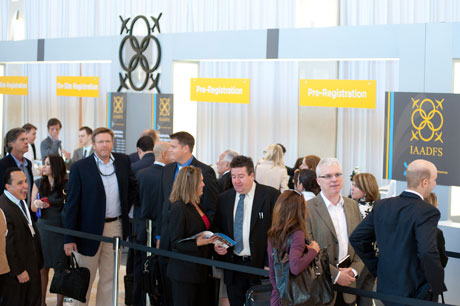 A Convention Hub
A Convention Hub
But most, if not none of this would be possible without funding, although the annual IAADFS show is about more than just dollars.
Over many years of reinventing itself, the show actually still serves like a hub airport, attracting many Latin American visitors of many nationalities, plus North American, European and other retail and supplier colleagues to one single convention venue, where considerable business is conducted.
This year will be no different, although a few cosmetic changes are being made to improve the event, including a new simplified flat fee registration pricing structure, enhanced sports (tennis, golf, soccer) and dance/exercise programmes for those who want to kick it all off with a bang.
More upscale entertainment is also being made available at the Gala Evening event – alongside music at the Club Americas night venue in the hotel. Another change involves the disappearance of the afternoon pool picnic which used to be organised by Philip Morris around seven years ago and has been subsidised by IAADFS ever since. Payne said it has really had its day now, with IAADFS preferring to invest this money on improving and upgrading the evening welcome cocktail instead.
IAADFS upbeat on show this year…
In his usual modest fashion, Payne says the changes are not exactly big, but they are aimed at elevating the show experience and he is upbeat about this year’s convention: “We’re very encouraged and feel very positively about it. The numbers at this pre-registration time frame, which you really can’t do a whole lot with in terms of certainty, are running ahead at about 7% to 8% of last year.
“But for our show we get a large on-site registration, so I’m always sceptical about making predictions. I think we’ll be up a bit, but I have no idea what the numbers are going to be.
“We are very careful about restricting who can come to this event anyhow, so we don’t have a 6,000-person universe to play with. Our visitor total is always going to be around 3,000 people and unless we change our criteria [for entry-Ed] that’s the way it’s going to stay, because that is what the suppliers want. They want a thoughtful, controlled opportunity for buyers to come in that are in the channel and it’s our job to make sure that happens.”
Asked whether he is pleased with the way that the Marriott Hotel treated everyone last year, Payne was affirmative: “You know, we have a fairly extensive meeting with the Marriott after the show and there are a couple of items that we pushed on last year. One has to do with some of the charges that revolve around technology, which is an issue in almost every centre or convention hotel that I’ve dealt with.
“We’re just trying to get that settled in a way that we can either absorb that cost for people, or establish that it is a much more reasonable approach. That was kind of the main complaint.”
By this, Payne specifically refers to the wireless access charges where show delegates and exhibitors can end up paying extra to stay connected on the exhibition floor. He said firmly: “People need to be able to have access and we don’t want them to have to pay an exorbitant amount, so we actually pay and bundle it under costs. So each supplier or exhibitor gets free internet access.
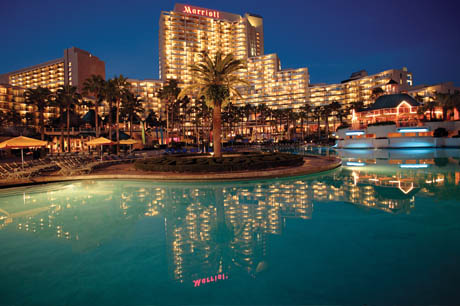 Wireless wanderers….
Wireless wanderers….
“But then you’ve got to deal with all the people wandering around that have other tools. Right now you sign up for access with the hotel and you pay. What we are trying to do is to figure out a way to have that access incorporated into the show so people don’t have that extra cost. But to be honest, that was the only thing that I thought was irritating last year”.
Payne says the trick is for IAADFS to get more bandwidth for its buck on the exhibition floor, as he acknowledges that many exhibitors and visitors are already paying for internet access in their rooms. “It’s not something that we can just turn around and pass the cost on to our folks.”
Having said this, Payne says that the return to the Marriott Hotel from Fort Lauderdale a few years ago continues to be advantageous and particularly now that the show and all of the attendees are all housed under one roof.
“Certainly based on the feedback in our surveys, conversations and anecdotal discussions, people seem pretty satisfied with it and like being back in that easy, accessible space where they can get around quickly and get their appointments done. We were generally satisfied with that.”
So show business aside, how does Payne read the confidence levels amongst consumers in the United States at present?
“Well in the Americas my sense is that it’s very upbeat across the board. Certainly you’ve seen numbers – you’ve got more access to them than I – that travel is up and that’s always a major indicator for our business. You know, if more people are flying, then generally it means more people are in the stores and buying and I think that’s certainly the case in The Americas.
“You’ve got some inequity in terms of how much growth you’re seeing and certainly Latin America and Brazil in particular are booming, but the US numbers are up as well. Mexico’s numbers are also increasing and the Caribbean is strong. So it is all very positive. You can even feel that buzz and energy as people sign up for the show and are anxious to get space, or more space.
“That’s always a good indicator for me from this trade perspective because we’re not having to go after people – they’re grabbing it early and a lot are looking for more, which unfortunately we can’t give them. We just don’t have any more space to give them right now. So I think it’s all very positive and upbeat. I think people are excitedly anxious to get there and do business.
Previous participants returning….
“We’ve also got some companies coming back that we haven’t had in a while. For example, L’Oréal is going to have a big presence, which is terrific for us, and – I think – for them. All the other major firms and some new ones are also going to be there, so all that feels good to me.”
So is there still no appetite amongst delegates for an IAADFS’ briefing or a mini conference of some sort at the Orlando event?
“Well that is a great question and a timely one because the Board has had some preliminary conversations about getting some educational content programmes going around the show. Last year was a little toe in the water, trying to find time on the Sunday to do the WHO workshop. But this event this year will be a little bit lighter in its focus, but still valuable.
“It might be better to look at some alternative time on the calendar when we could organize a smaller conference and I think there’s more of an appetite for that than there used to be. The Board is very conscious about trying to push too much into that five-day event because there’s not a lot of time. I mean once you start the show on Monday there’s just no time and Sunday is pretty jam packed.”
So what about IAADFS itself, we asked? What is engaging the association’s focus at the moment?
“Well the WHO issues are staying in front of us for sure and they are coming to somewhat of a closure – if you want to consider it closure. There will be some form of resolution now in March hopefully, so we have stayed involved and engaged in that. We will have some representation over in Geneva towards the end of March when the group comes back to finalize their work on the Treaty.
Tobacco and liquor issues…
Will Jon Kent [IAADFS’ advocate to Washington-Ed] be leading on that, we asked?
“I think Jon’s going to go for a part of it for sure. We’ve continued to stay in touch with our ETRC friends on where everybody is and what we’re doing. We’ve also been working with some of our Latin American countries.
“As you know, the US is not a signatory on the Treaty, so it has observer status only. But when they have these meetings the Latin American and some of the Caribbean States are engaged, so we’ve been trying to coordinate with them as well while we are looking out for the interests of the duty free industry.”
IAADFS is also keeping a keen watchful eye on the WHO global initiative on alcohol as to how this may or may not impact on the business, either directly or otherwise, although Payne says this issue is quiet for the time being.
While no actual threat has materialised to date, the industry’s experiences of being caught out by unexpected events in the past has taught all of its associations not to be trapped on the defensive. IAADFS was one of the best exponents of this foot forward approach many years ago and it continues to be to this day.
Commenting on the alcohol issue specifically, Payne said that recent meetings in New York had raised no immediate concerns, but the industry must remain vigilant: “So far, duty free doesn’t seem to have been singled out in any way, although I think you have to continue to watch this. There is a big effort to reduce the abuse of alcohol.
“It’s the same thing with tobacco where they are targeting under age issues. We are obviously not the problem here, but you still have to watch that and make sure it doesn’t start to evolve into anything else. Pricing is one of the issues they focus on as a deterrent, so anytime they start talking about pricing and taxing, we make sure we’re not getting harmed by that.”
Payne agrees that the much more active approach to such issues and cooperation and information exchange between regional associations generally should continue to make the industry stronger. He also hopes that the days where the industry would get surprised by developing issues which might damage it are over.
He said: “I think that’s right and that is the whole point. You put some energy and time into working with some fellow organizations including the spirits and Distillers Council and others just to make sure you’re aware and involved. Also, where we can be helpful we are, so luckily there hasn’t been a whole load of other aggressive activity in the Americas that we’ve had to engage in.”
Another issue where IAADFS has been very active relates to the development of passenger scanning in North American airports and the ability of this technology to detect explosives particles in liquids in particular.
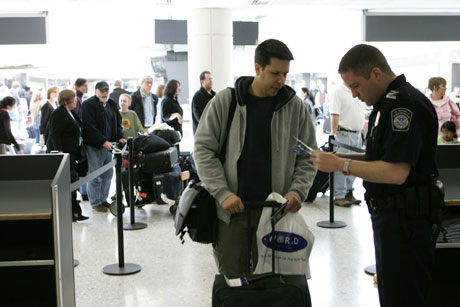 Scanner funding initiatives…
Scanner funding initiatives…
Asked where the TSA is with this issue at the moment, Payne said: “Well they’re two separate questions. There certainly is more being done in the States, particularly in terms of funding scanners and other technology to screen for security. I think you are also going to see more advances in that.
“What we don’t see yet is any appetite for allowing people to transit through with liquids and gels like you’re going to be able to do in the EU and over in Canada. The US is still not allowing this, so that continues to be an issue for us to focus on. According to the TSA and the public information they’ve released, they are just not convinced there’s a safe way to do that yet.
“So we’re going to continue to have that issue with transit passengers. It’s not an issue for people who are landing and leaving the airport, but it’s a difficult transit passenger problem and that’s still out there.
“Having said that, I also think people have settled into an understanding of how to work with that. You have glitches now and then, but by and large – and it took a while – I think people understand what they can and cannot do now.”
Meanwhile, another problem that was being addressed in US airports was the friendliness – or lack of it – from US customs and immigration, but Payne says he has noticed an improvement here, although some other deep-rooted problems still remain.
Communication skills….
While officials have made an effort to be friendlier to visitors to the US when they enter the country, there are still some major problems for people wishing to visit to obtain visas. Much of this is simply down to the lack of manpower, but it is costing the US a lot of money in lost tourism revenue.
Payne said: “The focus is particularly on working with some of the BRIC countries, such as Brazil, China, India and to a lesser extent Russia.”
He said nationals from these countries have had considerable difficulties obtaining the necessary visas, leading to pressure on government to consider visa waivers in some instances.
“It seems that we are just not structured or staffed to make that process work as easily as it does for say the EU, which has conforming programmes with the US. So I think people are starting to focus on the fact that if you make this so difficult, not just for people travelling in but for products getting in, it’s a negative, a big negative and they’ll go somewhere else. It shouldn’t take six months and be so complex as it is to get a visa.
“For example, there are parts of Brazil where you’ve only got two or three consulates that can do in-person interviews. So if you make a mistake it could be hell if it involves you in a six-hour trip. Part of the new effort that’s underway which is just starting to evolve is to try to do some of these interviews by Skype or some other means to finish what needs to be done without the time restraints.
“This is true for Chinese and some other countries as well, so it’s a process, although it’s not going to get done overnight. But there’s certainly a recognition that we’ve got to make it easier and make it more reciprocal.”
Payne says that the message seems to be finally getting through that these are high-spending visitors and the United States could do with some of this foreign income right now. He says there is also greater recognition that the economy needs more tourists – both high and low spending.
Meanwhile, one major step forward is the recent submission of the reauthorization bill for the FAA for signature on President Obama’s desk. The FAA has literally existed with a temporary bill for many years and only last year the country’s airport construction projects and FAA staff saw the money dry up when the previous temporary bill expired.
Politicians actually went on recess leaving the bill to expire –an action which rightly provoked a furore in the US that something so important could be neglected. Payne says that the good news now is that there’s new funding involved with this latest effort, but he says every dollar has to be fought for in the current climate and especially considering that airports in the US are largely federally funded.
People power prevailed
Looking back at the general anger that prevailed when the previous bill was allowed to expire, Payne said that the politicians certainly got the message loud and clear that this was unacceptable to ordinary US citizens.
He said: “This FAA reauthorization bill now takes all that off the table versus what happened last summer where you had controllers that couldn’t go to work. I think that was a good example of where grass roots interests just rose up and said ‘this is insane… I mean you can’t even agree on this’ and they fixed it.”
Other issues of watchful concern for IAADFS at present include the first signs of a one-bag policy from low-cost carrier Spirit Airlines and the strict code it has introduced on baggage charges. While this carrier is mostly domestic, the practice could spread to other airlines and Payne agrees that the message it sends is negative.
“I do think it’s a concern if you’ve got airlines that start charging for something that in effect would be a purchased item out of a duty free store, which is the question I think you’re driving at. That could be definitely problematic for a whole lot of reasons… particularly in an area like the States where the delivery is gate side.
“To be honest we haven’t seen this yet, although I’ve had a couple of queries about it and we have had some follow-up conversations with a couple of airlines that turned out not to be excess charge issues. But I certainly know from coordinating with the folks in Europe that it’s something they’re watching very carefully and if Spirit does it and gets away with it, and makes it a profit centre, others could look at the same thing, so it is an issue.
“We’re focused on it and we’re concerned about it and it comes up in Board discussions just to make sure that if there is any feedback then we know what’s happening and we can deal with it.”
On a much more positive note, Payne says there are signs from various recent consumer research confidence studies that the mood is generally improving in the US and the feeling is that private business seems to be hiring and spending money again.
He says this has to be very good news, irrespective of what the government does or does not do, or the expectations ahead of the imminent Presidential election. He added: “My last observation on that is simply when the numbers are up in air travel and they continue to rise, then you know things are getting better – that’s my yardstick.
“If they don’t then it’s going to be a problem. I can tell you that when I fly, everything is full at the moment.”
[This interview is carried in full in the March 2012 issue of The Travel Retail Business magazine-Ed].
Kreol TR brings Petit Gourmet's ‘Dubai Chocolate’ sku to Riyadh Duty Free
Kreol Travel Retail has expanded the reach of the Petit Gourmet brand with a new listing for...
L’Oréal Paris and Royal Salute go cross-category at Suvarnabhumi
L’Oréal Paris has joined forces with Royal Salute on a cross-category collaboration activation...
Nestlé ITR hails succesful Cailler activation with Lagardère Travel Retail
Nestlé International Travel Retail (NITR) is hailing the success of a recent activation...
-
 Featured Interview,
Featured Interview,Kreol TR brings Petit Gourmet's ‘Dubai Chocolate’ sku to Riyadh Duty Free
-
 Featured Interview,
Featured Interview,L’Oréal Paris and Royal Salute go cross-category at Suvarnabhumi
-
 Featured Interview,
Featured Interview,Nestlé ITR hails succesful Cailler activation with Lagardère Travel Retail

In the Magazine
TRBusiness Magazine is free to access. Read the latest issue now.

 Trbusiness. The travel retail Trbusiness. The magazine for global retail and duty free professionals.
Trbusiness. The travel retail Trbusiness. The magazine for global retail and duty free professionals.

